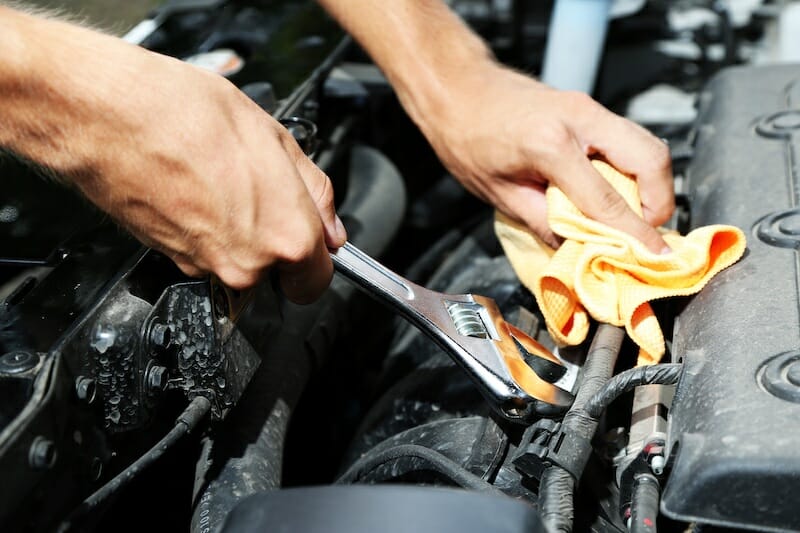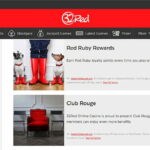Insurance Coverage
Automotive repair shops require comprehensive insurance protection to mitigate risks associated with their operations. Various types of coverage are available, each catering to specific aspects of the business.
Essential coverages include:
General Liability Insurance
- Protects against claims of bodily injury or property damage to third parties arising from the shop’s operations.
- Covers legal expenses and settlements associated with such claims.
Property Insurance
- Covers the physical assets of the shop, including the building, equipment, and inventory.
- Protects against losses due to fire, theft, vandalism, or natural disasters.
Business Interruption Insurance
- Provides compensation for lost income and expenses incurred if the shop is unable to operate due to a covered event.
- Ensures financial stability during unexpected disruptions.
Commercial Auto Insurance
- Covers vehicles owned or leased by the shop.
- Provides liability protection for accidents involving employees or customers.
Workers’ Compensation Insurance
- Mandatory in most jurisdictions.
- Provides benefits to employees who suffer work-related injuries or illnesses.
Adequate insurance protection is crucial for automotive repair shops to manage risks, protect their assets, and maintain financial stability in the face of unforeseen events.
Risk Management
Effective risk management is essential for automotive repair shops. Identifying potential risks and implementing strategies to mitigate them can protect your business from financial losses, legal liabilities, and reputational damage.
Insurance plays a crucial role in risk management by providing financial protection against unforeseen events. However, it’s important to supplement insurance with proactive risk management practices.
Common Risks
- Property damage: Fires, floods, and storms can cause extensive damage to your shop, equipment, and inventory.
- Liability claims: Accidents involving customers’ vehicles or injuries to employees or customers can result in costly lawsuits.
- Theft and vandalism: Valuable tools, equipment, and vehicles can be stolen or vandalized, leading to significant losses.
- Cybersecurity breaches: With the increasing reliance on technology, automotive repair shops are vulnerable to cyberattacks that can compromise customer data or disrupt operations.
- Environmental hazards: Mishandling of hazardous materials or waste can lead to environmental violations and fines.
Risk Mitigation
To mitigate these risks, consider the following strategies:
- Invest in security measures: Install security cameras, alarms, and access control systems to deter theft and vandalism.
- Implement proper safety protocols: Train employees on safe work practices, provide personal protective equipment, and regularly inspect equipment for hazards.
- Maintain proper documentation: Keep detailed records of vehicle repairs, inspections, and customer communications to provide evidence in case of disputes.
- Conduct regular risk assessments: Identify potential hazards and vulnerabilities and develop plans to address them.
- Purchase comprehensive insurance coverage: Ensure you have adequate coverage for property damage, liability, theft, and other risks.
Claims Process

Filing an insurance claim for an automotive repair shop involves several steps. Understanding these steps can ensure a smooth and efficient claims process.
Documenting the incident and gathering evidence is crucial. This includes taking photos of the damage, obtaining witness statements, and collecting any relevant invoices or receipts. It is also essential to report the incident to the insurance company promptly.
Submitting a Claim
To submit a claim, contact your insurance provider and provide details of the incident. The insurance company will assign an adjuster to investigate the claim and determine the extent of coverage. Cooperate fully with the adjuster and provide all necessary documentation.
Working with Adjusters
Building a positive relationship with the insurance adjuster is important. Communicate clearly and provide all requested information promptly. Be prepared to negotiate the settlement amount and ensure that it covers the actual cost of repairs. If you have any disputes with the adjuster, consider seeking legal advice.
Insurance Costs
The cost of automotive repair shop insurance is determined by a number of factors, including:
- The size and location of your shop
- The number of employees you have
- The types of services you offer
- Your claims history
- Your deductible
There are a number of things you can do to reduce your insurance premiums, including:
- Increasing your deductible
- Installing security features in your shop
- Maintaining a good claims history
- Bundling your insurance policies with one provider
It is important to compare quotes from multiple insurance providers before purchasing a policy. This will help you ensure that you are getting the best possible rate.
Legal Considerations
Automotive repair shop insurance is not merely a suggestion; it is a legal necessity. In most jurisdictions, businesses that provide automotive repair services are required by law to carry liability insurance. This insurance protects the shop and its employees from financial responsibility in the event of an accident or injury that occurs on the premises or during the course of business.
Potential Consequences of Inadequate Insurance
Failing to maintain adequate insurance can have serious consequences for an automotive repair shop. In the event of an accident or injury, the shop could be held liable for damages that exceed the limits of its insurance coverage. This could result in the shop having to pay out of pocket for expenses such as medical bills, property damage, and legal fees. In some cases, the shop could even be forced to close its doors.
Complying with Laws and Regulations
To ensure compliance with all applicable laws and regulations, automotive repair shops should work with an insurance agent to obtain the appropriate coverage. The agent can help the shop determine the minimum amount of insurance required by law and can also recommend additional coverage options that may be beneficial.
Industry Trends
The automotive repair shop insurance industry is constantly evolving, driven by technological advancements, changing consumer demands, and regulatory shifts. These trends are shaping the coverage and costs of insurance policies, as well as influencing the future of the industry.
Technology Advancements
Technological advancements, such as telematics and artificial intelligence (AI), are transforming the way that insurance companies assess risk and provide coverage. Telematics devices collect data on driving habits, vehicle performance, and maintenance history, allowing insurers to offer personalized policies based on individual risk profiles. AI is used to analyze large datasets and identify patterns that can help insurers predict and prevent accidents.
Changing Consumer Demands
Changing consumer demands are also impacting the automotive repair shop insurance industry. Consumers are increasingly seeking convenient and personalized insurance solutions. They want policies that are tailored to their specific needs and offer flexible payment options. Insurers are responding to these demands by offering a wider range of coverage options and payment plans.
Regulatory Shifts
Regulatory shifts, such as the implementation of new safety standards and environmental regulations, are also influencing the automotive repair shop insurance industry. Insurers must adapt their policies to comply with these regulations, which can impact coverage and costs. For example, new safety features may reduce the risk of accidents, leading to lower insurance premiums.
The Future of Automotive Repair Shop Insurance
The future of automotive repair shop insurance is likely to be shaped by the continued evolution of technology, changing consumer demands, and regulatory shifts. As technology advances, insurers will have access to more data and analytics, enabling them to offer even more personalized and predictive coverage. Consumers will continue to demand convenient and flexible insurance solutions, and insurers will need to adapt to meet these needs. Regulatory changes will also continue to impact the industry, and insurers must be prepared to adjust their policies accordingly.






